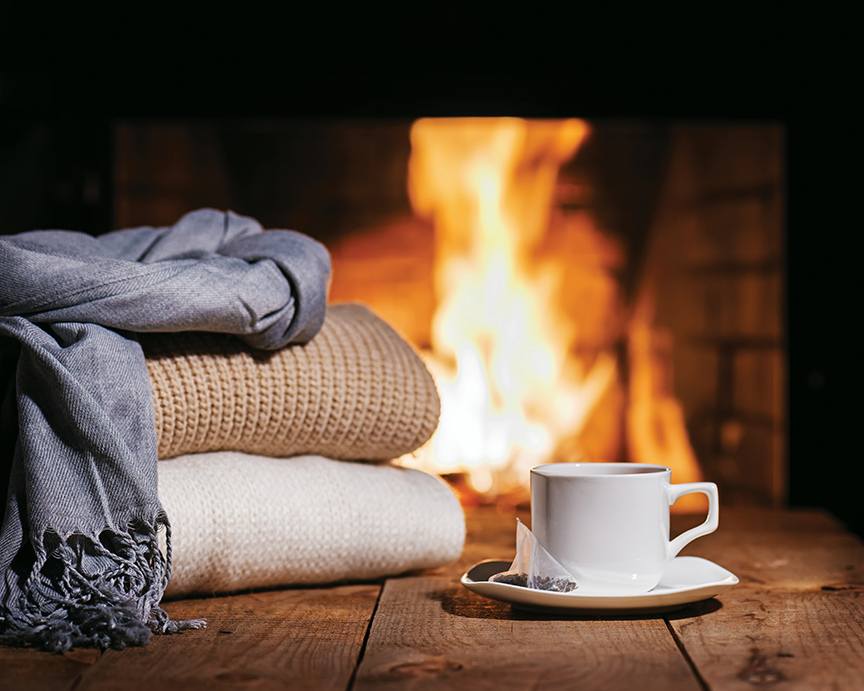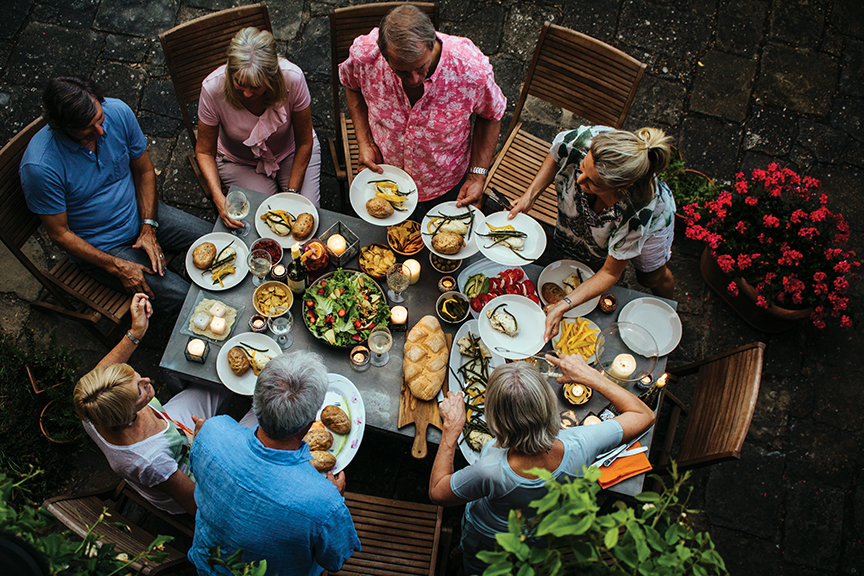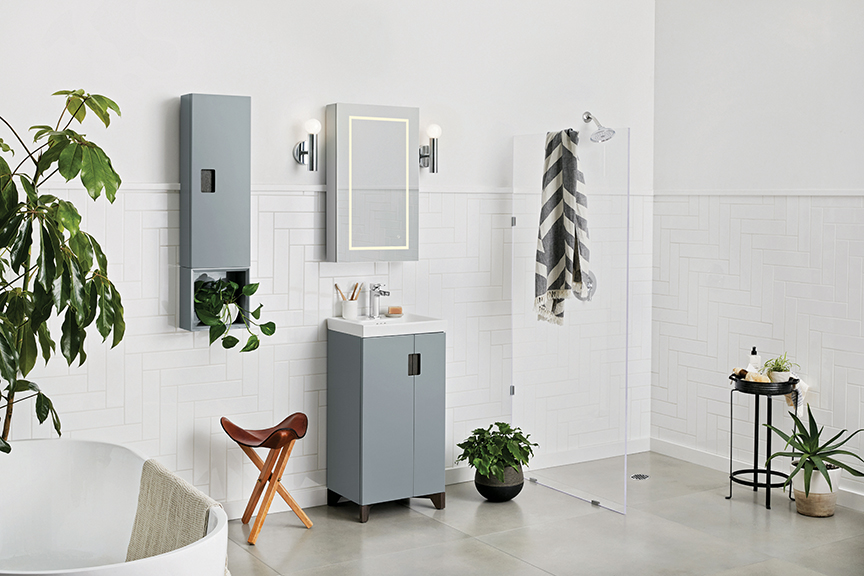Hygge: This philosophy of relaxation is gaining traction in the U.S. and around the world.
By Alyssa Gautieri

Photo ©iStockPhoto.com/Ulzanna
“Hygge so perfectly describes what it means to be happy. It’s not material items that make us happy — it’s taking time to discover what really fills up our tank internally,” says Samantha J. Vander Wielen, health coach and owner of Philadelphia-based Hygge Wellness.
The taste of cake and hot tea, the sound of fire crackling, the scent of fresh bread in the oven, the sight of flickering candle flames and the feeling of total contentment — this may describe your ideal hygge moment.
“Hygge” (hoo-gah) is a Danish term used to describe an atmosphere of coziness and calmness. It isn’t about spending money, but instead, it’s about taking a step back and enjoying the smaller things in life. Hygge is about togetherness and sharing a pot of coffee among friends or family. But, it also may be about grabbing a good book, snuggling up with a blanket and enjoying some “you” time.
While the perfect hygelig evening — complete with a hot beverage, fireplace, thick blanket and sweatpants — may seem ideal for the fall or winter, hygee can be shared year-round.
Hygge has been embraced in the Danish culture for centuries, but only recently has the concept spread worldwide.
British Journalist Helen Russell has done her part to spread knowledge of hygge. As she spent a year in Denmark, Russell became largely influenced by hygge — a concept so engrained in Danish culture — and it became the inspiration for her bestselling work, The Year of Living Danishly: Uncovering the Secrets of the World’s Happiest Country.
While the word hygge defies literal translation, Russell believes the best definition is “the complete absence of anything annoying or emotionally overwhelming: taking pleasure from the presence of gentle, soothing things.” She adds, “Hygge isn’t a commodity and it shouldn’t cost you anything — simple candles are better than fancy scented ones, an old knitted blanket is better than the latest designer incarnation, and hot drinks in mismatched mugs are just fine.”
With little knowledge of Danish culture and without knowing a bit of the Danish language, Russell moved to Denmark when her husband was offered a job in the rural city of Jutland. After only a few days there, Russell first heard the term used in a Danish bakery.
About a year later, she wrote a book about her life in Denmark. “My intention in writing the book was to uncover the lessons we can all learn to get happier by living more Danishly — wherever we are,” she says. “The book was the first to introduce the world to the concept of hygge and distil the best advice on getting happy.”
Since its publication in 2015, the response to the book has been phenomenal. It is now a bestseller, published in 19 countries worldwide and has spurred a huge interest in the Danish lifestyle. “I knew that the phenomenon would strike a chord, but I had no idea it would become so huge,” Russell admitted.
One of the many individuals who were inspired by the book is Samantha J. Vander Wielen, health coach and owner of Philadelphia-based Hygge Wellness. After reading the book, Wielen decided to name her business after hygge because of the relationship she saw between hygge and wellness. “Hygge so perfectly describes what it means to be happy. It’s not material items that make us happy — it’s taking the time to discover what really fills up our tank internally,” she said. “I realized there was such a strong connection between this idea and my approach to wellness.”
Meik Wiking, the CEO of the Happiness Research Institute in Copenhagen, has also brought a lot of attention to hygge with his 2016 book, The Little Book of Hygge: Danish Secrets to Happy Living. While each individuals’ ideal hygge moment may vary, there are some components that Wiking discusses in his book — and many Danes have agreed — are essential to hygge.


Left photo ©istockphoto.com/SolStock; right photo courtesy Ronbow
Togetherness
In The Little Book of Hygge, Wiking says 57 percent of Danes believe it takes 3 to 4 people to have hygge. A smaller, more intimate group seems to create a perfect space for support and coziness. “Hygge is about the company you’re keeping,” says Russell. “Hygge has a lot to do with togetherness, so it’s about prioritizing your people, cramming as many of the folk you care about around a table and eating, drinking and being generally merry.”
Light
Wiking dedicates his entire first chapter of The Little Book of Hygge to light, claiming “no recipe for hygge is complete without candles.” According to Wiking’s research, more than half of Danes light candles almost every day during autumn and winter, and only 4 percent say they never light candles.
When it comes to lamps, the Danes don’t like bright lights. Instead, they prefer a warm, soft glow, — artfully using illumination to produce soothing pools of light throughout their homes.
Food and drink
Cake, ice cream, soup, wine, coffee or beer — hygge is about comfort food and drink and treating yourself to the treats you love. According to Wielen, there is one fundamental difference between the way Americans eat and drink and how the Danes indulge. “Danes don’t binge then purge like we do in the U.K. and the U.S.,” she said. “Instead they’re kind to themselves, indulging when they fancy it and not depriving or punishing themselves.”
But hygge isn’t about getting too full or eating to the point of regret. Instead, it means eating and drinking slowly while appreciating the present moment. According to Wielen, the Dane’s way of indulging “makes them nicer to be around and happier as a nation.”
Clothing
Bulky sweaters, cozy sweatpants, oversized scarfs and fluffy socks are hygge. Hygge is not about looking cute, it is about feeling comfortable. As Wiking puts it in The Little Book of Hygge, “casual is key” when it comes to hygelig clothing. Hygge is about layers and the bigger, the better.
Home Décor
According to Wiking, 71 percent of Danes experience hygge most often within their own homes. So, what are the essentials to a hygelig home? A hygelig home should include a fireplace, candles (obviously), wooden furniture, vintage accents, books, nature and an abundance of blankets and pillows.
Wellness
Wielen, whose business is centered on fitness and health, created Hygge Wellness around the concept of hygge because she believes hygge is essential to mental health. “To me, hygge is all about cultivating experiences, moments and spaces in your life and home that restore, rejuvenate, and fulfill you,” she said.
According to Wielen, a client’s fitness goals may be reached only after their mental health and happiness is prioritized. “It’s when we’re fulfilled in the major areas of our life that we feel comfortable around food, eager to move our bodies, and present enough to care for our minds,” she said.
Incorporating natural elements and vintage accents can help to bring hygge into any home. Ronbow’s contemporary vanities (pictured above) merge a minimalist sophisticated design with form and function.
Is Hygge the reason the Danes are so happy?
Consistently, the Danes have been among the top three on the World Happiness Report. Cultures around the world are beginning to embrace hygge in hopes that it will bring them happiness too. Can the Dane’s happiness be contributed to hygge?
Helen Russell: “Hygge has been proven to make you happier — because you’re being kind to yourself. This in turn has been shown to make you nicer to other people and more generous and kind to society as a whole. Denmark has been ranked the happiest country in the world in studies going back to the 1970s — so it’s clear that there’s something Danes are doing differently and hygge plays a big part in this.”
Samantha J. Vander Wielen: “Absolutely! It’s not just the act of hygge or having hygge moments that makes the Danes some of the happiest in the world. It’s the fact that they cultivate experiences, and make space in their homes and lives to take care of themselves. They seem to have mastered the idea that they need to practice self-care in order to be the best versions of themselves. I also think the emphasis on social interactions makes them some of the happiest.”














